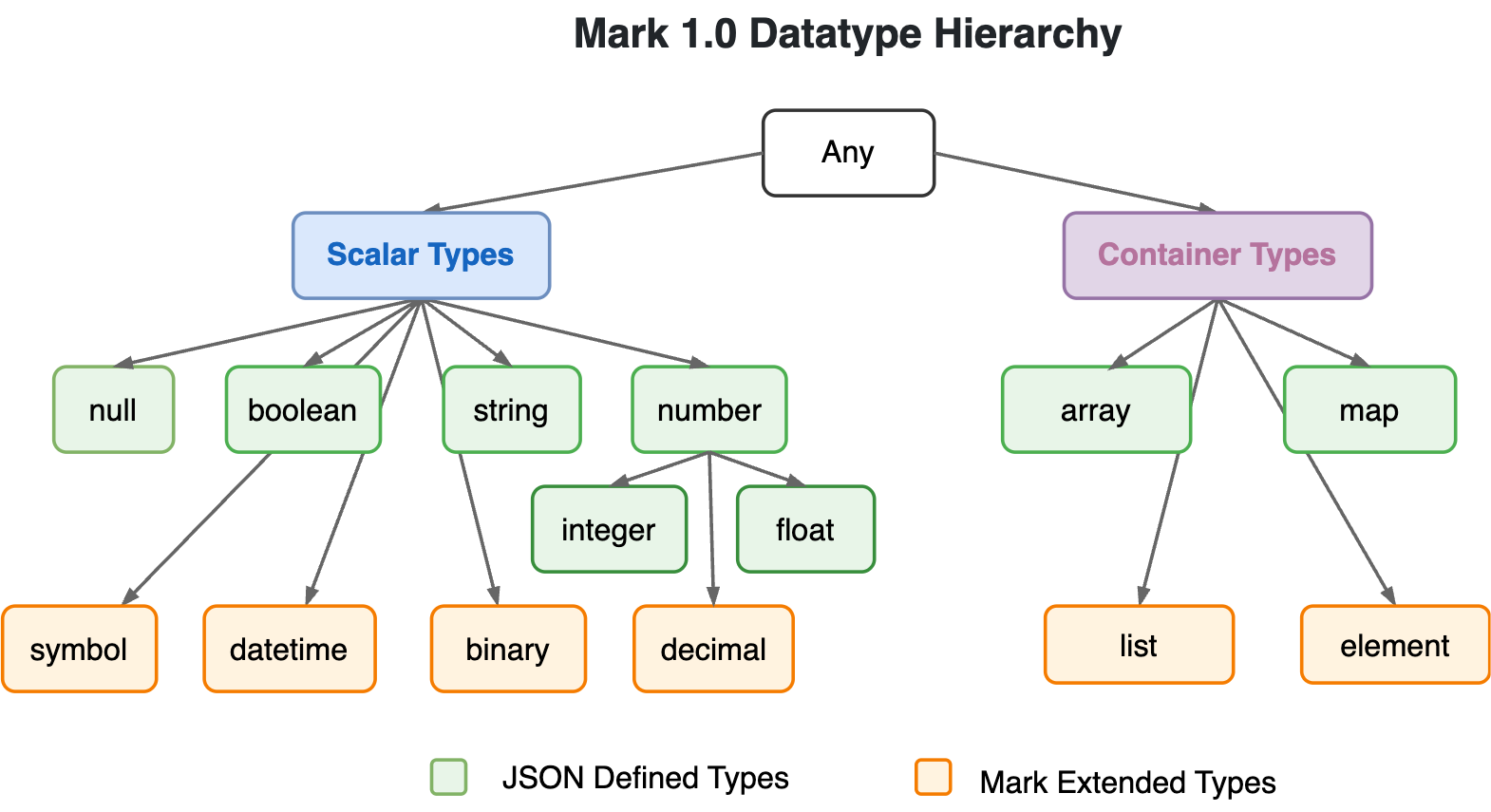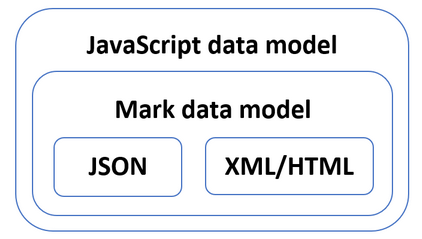Mark has a simple and fully-typed data model. It is an extension to the JSON data model.
Mark 1.0 extends JSON data model with several new data types:
- scalar types: symbol, datetime, binary, and decimal number.
- container types: list and element.
With the new data type additions, essentially all commonly used built-in data types under JS are well represented under Mark.

Roughly speaking, JSON, HTML and XML data models are subsets of Mark data model, and Mark data model is a subset of JS data model.

1. Symbol
Mark symbol maps to JS symbol.
2. Datetime
Mark datetime accepts ISO 8601 Datatime input, and is parsed into JS Date.
3. Binary
A binary object is represented by an JS ArrayBuffer, containing the bytes decoded from the source characters in either hex or base64 encoding.
It has a property encoding, which currently can be hex or b64.
Unlike string, consecutive binary objects within the content of a Mark element content are not merged.
4. Decimal
Mark supports (big) decimal number. It is an integer or decimal number ended with postfix ‘n’ or ‘N’.
mark.js library currently only implemented bigint support. Big decimal support will be added later.
5. Element
Mark element extends map object with a type name and a list of content objects. Mark element is designed to act like element in HTML/XML.
A Mark element essentially contains 3 facets of data in its data model:
- element name: a string that represent the type name of the Mark object, which is like element name in HTML/XML.
- properties: a collection of key-value pairs, like properties of JSON objects, and attributes of HTML/XML elements.
- For Mark object, property key cannot be numeric, which is reserved for the content objects. JSON object in Mark can still have all kinds of keys.
- And property key must be unique under the same object, for both Mark and JSON object. (JSON spec has left this open, and there are many implementations accept duplicate keys.)
- contents: an ordered list of content objects, which are like child nodes of elements in HTML/XML. Mark utilizes a novel feature of JS that JS object can be array-like. It can store both named properties and indexed properties.
Mark performs following normalization on the content stored in an element:
nullvalues are discarded.- Consecutive strings are merged into one single string.
- a list in the element content will have its items auto spread/flattened.
These normalizations are performed to make Mark more friendly to use under mixed-content use cases.
6. List
Mark list represents an ordered collection of items. It is introduced to represent the data model of Mark element content.
Mark list behaves differently from an array. It performs normalization when data is added into the array:
nullvalues are discarded.- Consecutive strings are merged into one single string.
- a nested list will have its items auto spread/flattened.
- if the list contains only one item, the list will be normalized to just that item.